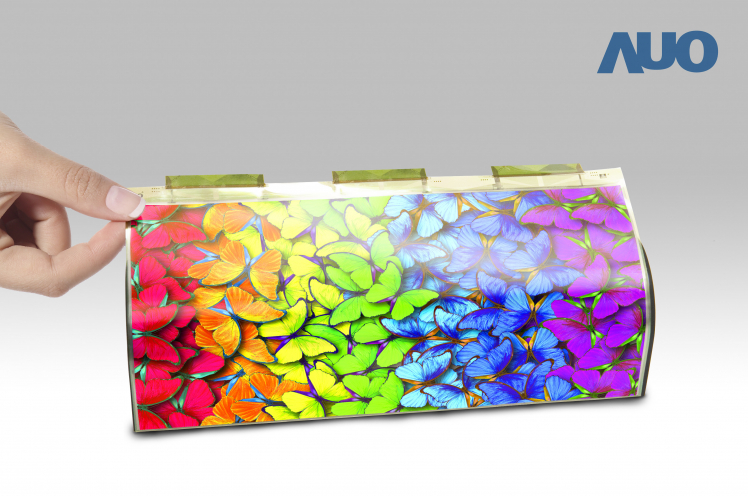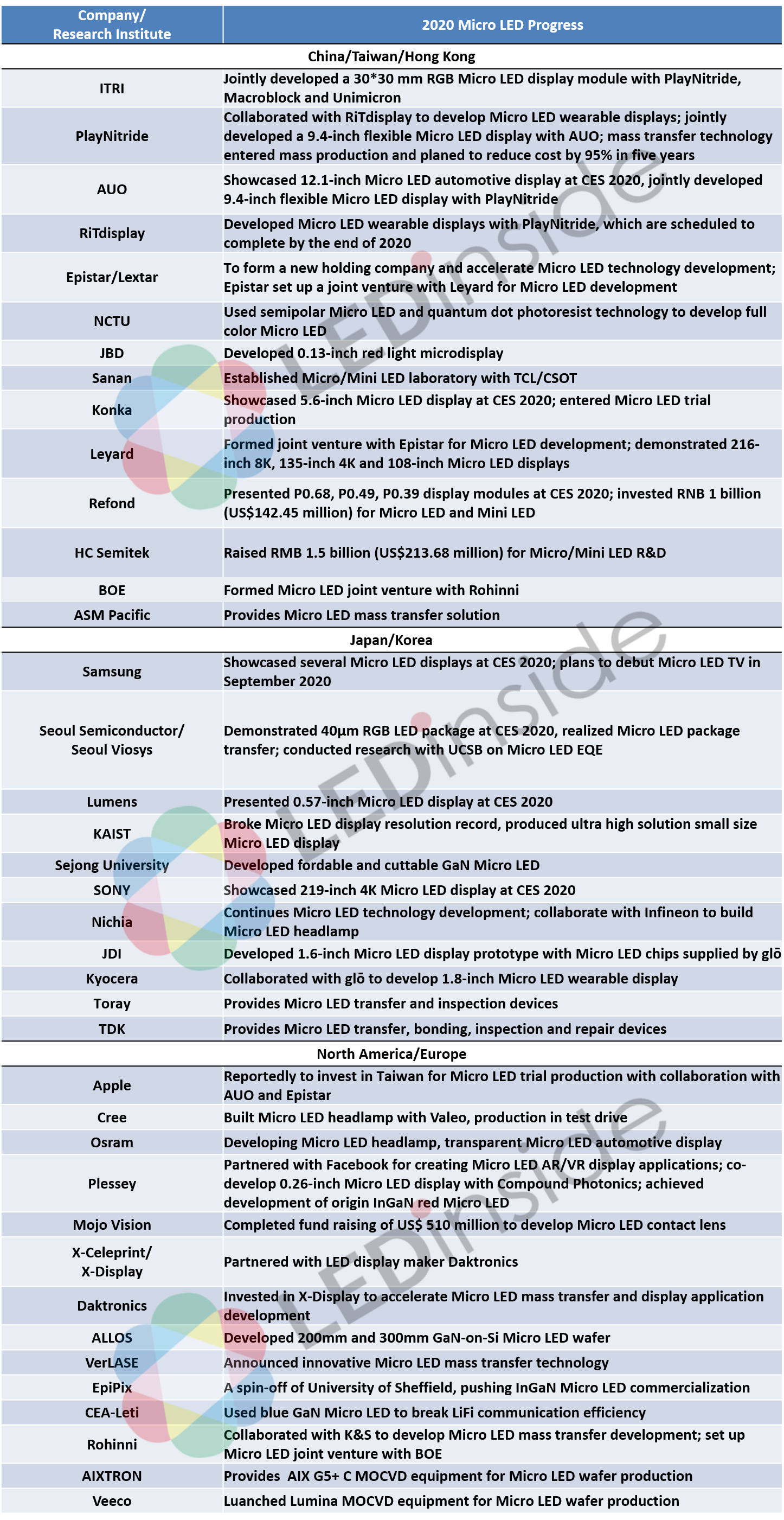Many major trade fairs and exhibitions for 2020 have been postponed or cancelled due to the COVID-19 pandemic. As a result, worldwide companies operating in different industries have delayed unveiling their new technologies. However, Micro LED technology developers may have a chance to achieve technological breakthroughs during this time of crisis because of opportunities that lie within this field of innovative display solutions. The first half of 2020 also saw noteworthy activities and events related to the R&D of Micro LED.

(Image: AUO)
The COVID-19 pandemic impacts the development of Micro LED technology and the functioning of the Micro LED supply chain mainly in the aspect of shipment schedules for equipment and raw materials. The progress on the development of new production processes has also been affected. On the other hand, the pandemic, which has caused production suspensions and slumping sales in numerous regional markets, is forcing Micro LED developers (including LED suppliers, component suppliers, consumer electronics brands and more.) to reorient their focus. As the market for end devices slows down, companies are allocating more resources such as production plants and process equipment to advancing technologies instead of concentrating their attention on already commercialized products as originally planned.
At the same time, Micro LED developers have been seeking collaborations with potential solution providers. The momentum of activities has thus shifted from the downstream sections to the upstream sections. This trend is expected to accelerate technological breakthroughs.
Global Enterprises Are Deepening Technological Collaborations with Potential Solution Providers to Seize the Initiative in the Micro LED Market
The first half of this year saw many Micro LED developers declaring plans for technological collaborations. Looking at North America and Europe, US-based LED display manufacturer Daktronics stated this March that it will be investing in X Display Company. Daktronic’s investment target is a spin-off from X-Celeprint, which is known for having IPs related to the mass transfer process. Daktronics will also commence joint R&D projects with X Display Company in the near future. To take another example, Plessey, a UK-based Micro LED display developer, has recently announced that it will be working with Facebook in the field of AR/VR. Specifically, Facebook will be using technologies licensed from Plessey to create advanced AR/VR applications.
In East Asia, Taiwan is poised to play a crucial role in the Micro LED supply chain as Apple has reportedly injected an enormous sum of capital into building a local research and production base. This base, which is also known as the Longtan fab, is located in the municipality of Taoyuan and was officially registered with the Hsinchu Science Park Bureau on May 10. There is a possibility that Apple could set up a trial production line for Micro LED display at the base because of the geographical advantage. The Longtan fab is situated near both semiconductor foundry TSMC and display panel manufacturer AUO, which operate in the upstream and downstream sections of the supply chain respectively. The Longtan fab can draw support from these neighbors to raise the efficiency of its R&D efforts. Apple’s proactive stance on the new display technology is also seen as one of the key reasons behind the formation of a new holding company jointly by Taiwan’s two major LED chip manufacturers Epistar and Lextar.
Regarding developments in China, the country’s largest LED chip manufacturer San’an Optoelectronics signed an MOU this March to establish a joint laboratory with domestic display panel manufacturer TCL/CSOT. The facility will be used to develop equipment and materials for the production of Micro LED displays.
More Breakthroughs in Micro LED Displays Thanks to the Integration between Supply Chain
The Consumer Electronics Show (CES) that was held in the US this January could very well be the only significant gathering of global enterprises that engage in technological innovations in 2020. The event also provided the venue for the largest showing to date of the Micro LED technology from competing developers. The popular consumer electronics brands including Sony, Samsung, and LG were eager to unveil their latest designs and specifications for Micro LED displays. Taiwan’s ITRI and panel manufacturer AUO demonstrated their solutions as well. It is also worth noting that quite a few companies from China such as Konka, Leyard Optoelectronic, Refond, and TCL/CSOT introduced their Micro LED displays at this year’s CES.
More announcements about technological breakthroughs and partnerships have been made since CES. Earlier this year, German epi-wafer specialist ALLOS Semiconductors and US-based startup iBeam Materials revealed their latest successes in the manufacturing of Micro LED chips. The latter company, in particular, has received funding from Samsung Venture. Another US-based startup Mojo Vision, which is creating smart contact lenses with an embedded Micro LED display, raised an additional US$51 million in a VC funding round this April.
In Taiwan, PlayNitride and AUO unveiled a 9.4-inch flexible Micro LED display this April. With a resolution reaching 228PPI, this flexible Micro LED display contains more than 5.5 million pieces of LED chips that are each smaller than 30μm in size.
LEDinside has created the following table to summarize the latest technological advancements made by Micro LED developers around the world.

LEDinside’s research indicates that there are still many bottlenecks in the development of the Micro LED technology. Shrinking the size of LED chips for display-related applications has created many technical hurdles. However, the rising demand to address process-related challenges, especially those involving the mass transfer and inspection of LED chips, will spur more startups to develop a diverse range of breakthrough innovations. This, in turn, could lead to reshufflings in different sections of the supply chain and formations of new ecosystems.
2020 Micro LED Forum will go online and begin broadcasting on July 29 for sharing more Micro LED and Mini LED technology breakthroughs and commercialization progresses. Register now for early bird discount!















